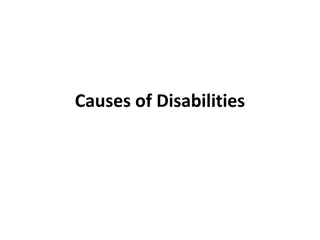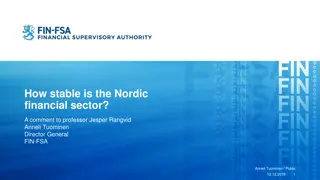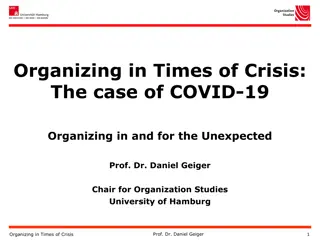Understanding the Causes and Fallout of the 2008 Financial Crisis
The 2008 financial crisis stemmed from a mix of factors such as subprime mortgage lending, lack of regulations, and risky investments. It led to a downward spiral with mortgage defaults, plummeting house prices, and a deep recession. Various entities including individuals, banks, and governments were held responsible for their role in the crisis, with calls for stricter lending criteria and better risk management practices to prevent similar events. Tougher regulations and proactive measures from regulators could have mitigated the impact of the crisis, highlighting the need for responsible financial practices.
Uploaded on Nov 23, 2024 | 0 Views
Download Presentation

Please find below an Image/Link to download the presentation.
The content on the website is provided AS IS for your information and personal use only. It may not be sold, licensed, or shared on other websites without obtaining consent from the author. Download presentation by click this link. If you encounter any issues during the download, it is possible that the publisher has removed the file from their server.
E N D
Presentation Transcript
CISI Financial Products, Markets & Services Topic Introduction to financial services Causes of the financial crisis cisi.org
Causes of the financial crisis What was the 2008 financial crisis all about? How did it happen? https://www.youtube.com/watch?v=v5Veyepqvfk cisi.org
The financial crisis How did it happen? People struggled to pay their mortgages house prices fell A deeper recession emerged as a result of high interest rates A mild recession higher unemployment and high inflation A flexible labour market triggered a fall in unemployment ECONOMIC RECOVERY Primary economic objective No more boom and bust! Strong economic growth cheap credit is more readily available and reduced regulations on mortgage lending 1997 Bank of England becomes independent and controls interest rates sub-prime customers defaulted on their mortgages house prices plummeted US banks take bigger risks lending to Sub-Prime customers sub-prime debt was packaged up into collateralized debt obligations (CDO) and sold to investors UK banks jump on the lending frenzy Nobody knew who was holding these toxic (bad) debts. Lending stopped taking place and bankruptcies started to increase. Homeowners still paying their mortgages faced negative equity defaults increased DOWNTURN AND RECESSION AUSTERITY Investment banks and investors were sitting on a large number of worthless assets. The debts were so large that only governments could absorb them. Many banks were bailed out (given cash) or nationalised. cisi.org
Who was to blame? The financial crisis was caused by a culmination of bad decisionsmade by individuals, organisations, institutions and governments. Participant What could they have done differently? Tougher lending criteria (Higher deposits required) Been more constrained with lending Been more responsible with their attitude towards risk Money Lenders (High Street Banks) Investment Banks Tougher regulations required. Regulators Campaigned for more action when the housing bubble began to expand. Been quicker to act when the crisis began pumped money into the economy sooner. Given encouragement for greater regulation. US Government should have avoided encouraging sub-prime mortgage lending Ensured they live within their means do not spend what you do not have. Bank of England Government Borrowers (The public) US Lenders and Investment Banks Investors Been more selective about who money was leant to. Been more aware of the risks they were taking. Been more selective about how they invested their money. cisi.org























